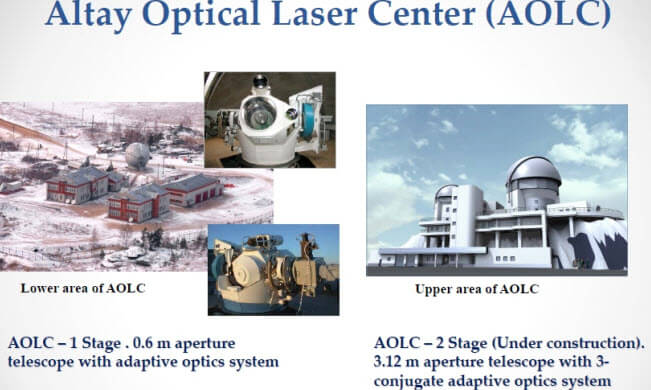Russia can add space to the list of places it is causing worry and disruption according to new reports. The belligerent communist state has already invaded Ukraine and is assisting Iran in Yemen but it is now causing uncretainty for America in the final frontier: Space.
The Federation of American Scientists reports that a Russian satellite tracking facility (pictured below) in Siberia has produced rarely-seen photographs of a U.S. intelligence satellite.
Russia this weekend leaked spy photos of the U.S. LACROSSE radar satellite. The captured images were generated by Russia’s Altay Optical Laser Center between 2005 and 2010.
A selection of images was compiled and analyzed by Allen Thomson and are included below.
“The images contain enough information (range, angular scale) to perform a bit of technical intelligence (i.e., sophomore high school trigonometry) on the radar antenna size, which is a significant parameter affecting capability,” Mr. Thomson, who is a former CIA analyst, told the website Secrecy News.
While provocative, the intent of the imagery disclosure was unclear and is likely just more posturing to get a rise out of U.S. forces.
“Why did the Russians release the images? Our government, like Russia itself, is highly paranoid about releasing detailed images of spy satellites. Given that Russian paranoia is at least as great, it beg the questions: how did these images get out? What was the purpose?”
The images appear to be mostly just a curiosity. But, in an age of rapid development on space weapons, they underscore the growing visibility and the corresponding vulnerability of U.S. space-based assets.
“Our asymmetrical advantage in space also creates asymmetrical vulnerabilities,” said Gil Klinger, an intelligence official, last year. “Our adversaries recognize our dependence on space and continue to think of ways to respond to our space advantage.”
Mr. Klinger testified at a 2014 House Armed Services Committee hearing on U.S. national security space activities, a record of which has just recently been published. The hearing addressed space protection, orbital debris, the industrial base and related topics.
Stay Connected
